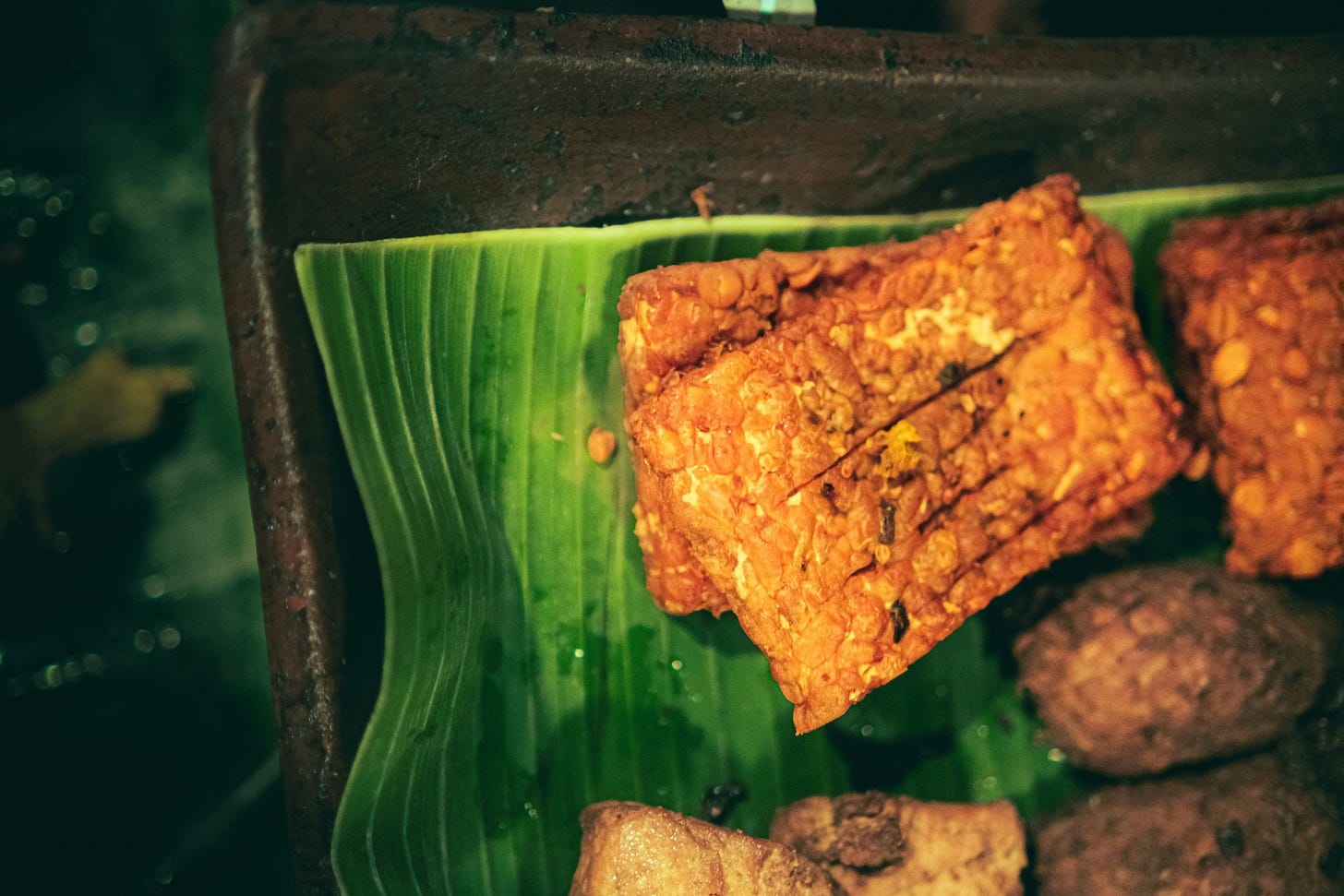May I Tempt You with Tempeh?
Tempeh, a traditional Indonesian food staple made from fermented soybeans, is packed with protein and deliciously versatile.

The first time I made dinner with tempeh as the main dish, I was not impressed. I’d tried panfrying it without oil; no sauce, no marinade. The consistency was weird, and the taste did not live up to its reputation as nutty. I expected it to taste like peanut butter. Instead, it tasted like gum after all the flavor is chewed out, mixed with overcooked brown rice.
That first attempt to welcome tempeh into my life was many years ago. I’ve long since become a big fan and learned a few tricks for making it tastier along the way. I’ve also come to relish the nutrition packed into one small piece of tempeh.
As a fermented food, tempeh is rich in prebiotics. It’s also a protein powerhouse—it contains all nine essential amino acids—and a great source of B vitamins, calcium, magnesium, phosphorus, and fiber.
You can find packaged tempeh in the refrigerated cases in many mainstream grocery stores. It will be located next to its first cousin, tofu. Conventional stores are unlikely to offer a wide variety of tempeh products. In stores that offer a rich array of vegetarian proteins—Wegman’s, for example—you may be able to choose between a tempeh product made with 100 percent organic soybeans and filtered water and one made with soybeans, grains, and filtered water.
Choose the 100 percent soybean variety.
I’m a big fan of grains, but tempeh formulas taste better without them.
Simple ways to make tempeh yummy
The great thing about tempeh (and tofu) is that it soaks up the flavors of any sauces or marinades you use. Therefore, it goes well with literally every savory dish.
Tempeh strips. Slice tempeh into thin strips (which is easy to do since tempeh, unlike tofu, is firm). Thin strips are better than thick ones for imbuing flavor.
You can panfry, bake, or steam the strips, then soak in your favorite marinade and serve with grains and veggies, or as part of a hearty salad.
Tempeh, especially if it’s a new experience for you, may seem to have a slightly bitter aftertaste. Luckily, you can eliminate that by soaking your tempeh for 30 minutes before baking, frying, or steaming.
Crumbled tempeh. Although tempeh is firm and holds up well for cutting and cooking, it’s just soybeans held together with water. You can easily break it apart and crumble it. Panfry and use in tacos or stir-fry with veggies and rice.
Pair tempeh with a delicious sauce. The website From My Bowl offers a scrumptious six-ingredient peanut tempeh recipe. If you try it, please let me know!


I can't wait to share these tips with my daughter who is always looking for ways to boost her protein intake.